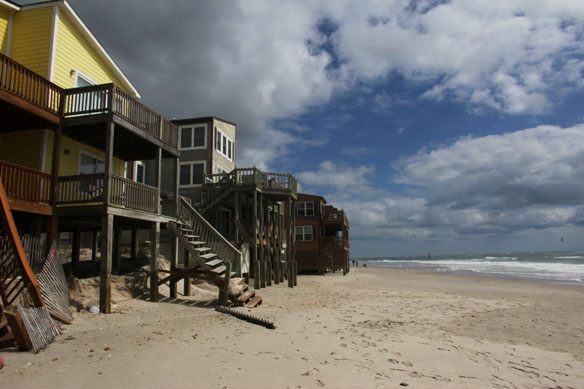
Topsail beach erosion, North Carolina. The Atlantic Ocean is eroding parts of North Topsail Beach by about five feet per year. Photo courtesy of:Denis Delestrac. ©2013
Excerpts;
While the scientific community has long warned about rising sea levels and their destructive impact on some of the United States’ most populous cities, researchers have developed a new, statistical method that more precisely calculates the rate of sea level rise, showing it’s not only increasing, but accelerating…
Read Full Article; Science Daily (08-08-2017)
Sea level rise isn’t just happening, it’s getting faster; The Washington Post (06-26-2017)
In at least the third such study published in the past year, scientists have confirmed seas are rising, and the rate of sea level rise is increasing as time passes — a sobering punchline for coastal communities that are only now beginning to prepare for a troubling future…
In Next Decades, Frequency of Coastal Flooding Will Double Globally; USGS (05-18-2017)
The frequency and severity of coastal flooding throughout the world will increase rapidly and eventually double in frequency over the coming decades even with only moderate amounts of sea level rise, according to a new study released in “Scientific Reports…”
Rising seas could result in 2 billion refugees by 2100; Science Daily (06-26-2017)
In the year 2100, 2 billion people — about one-fifth of the world’s population — could become climate change refugees due to rising ocean levels. Those who once lived on coastlines will face displacement and resettlement bottlenecks as they seek habitable places inland, according to new research…








